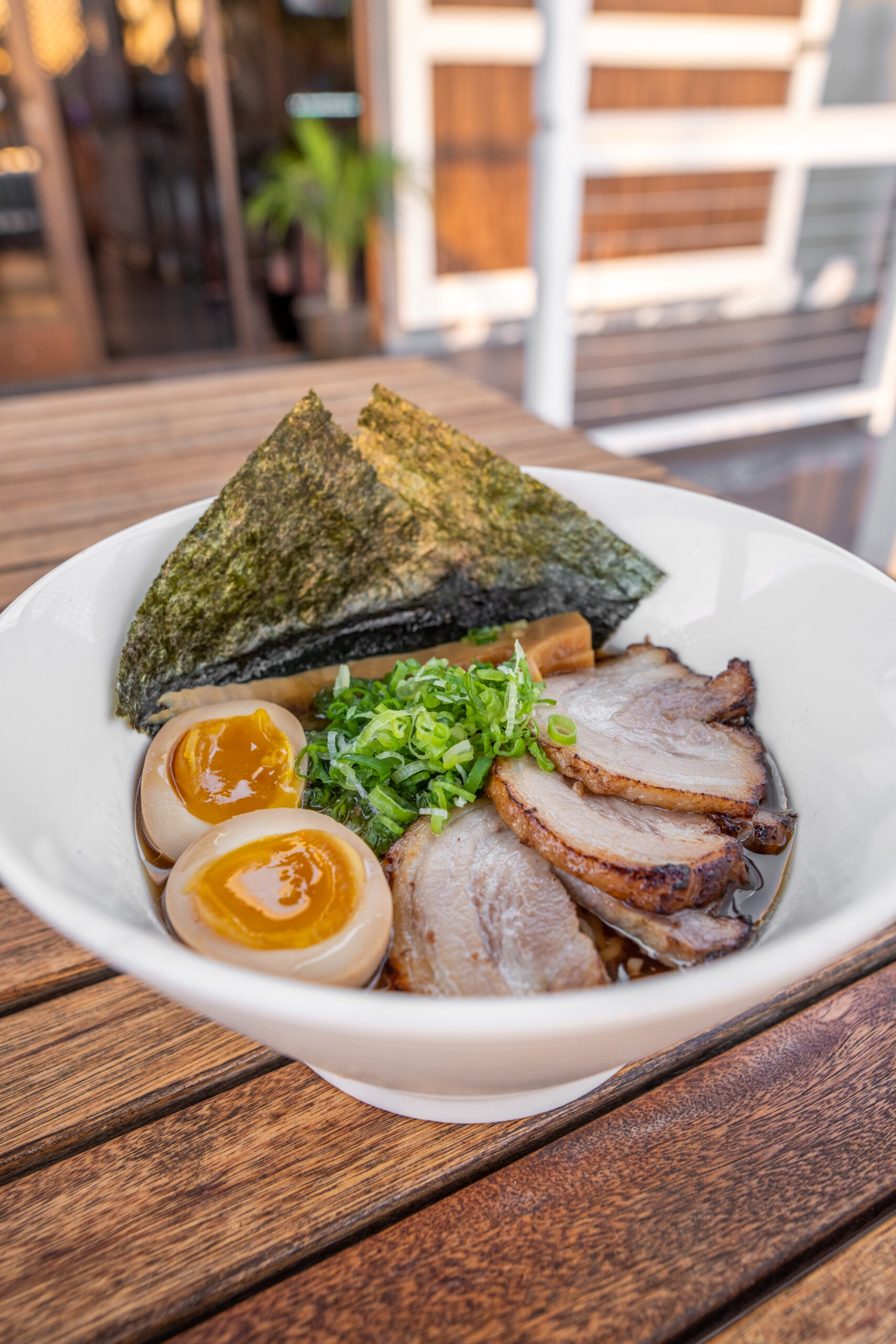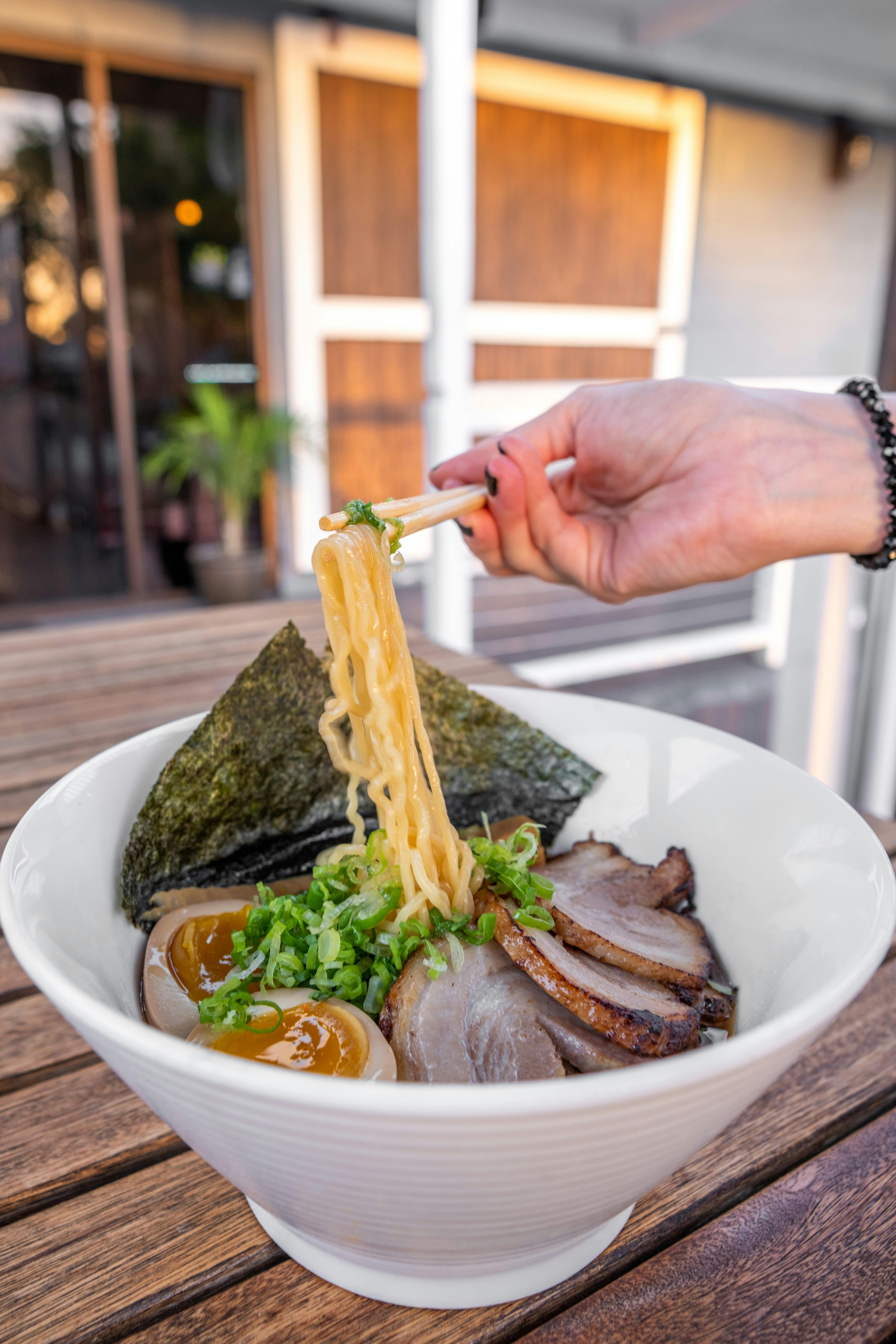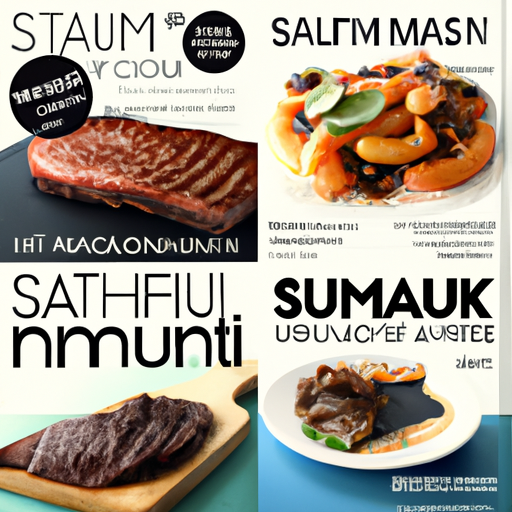In the world of cooking, there are the familiar tastes of sweet, salty, sour, and bitter that we all know and love. But have you ever heard of umami? It’s the fifth taste that has been captivating chefs and food enthusiasts alike. In this article, we will take a closer look at umami and how it adds depth and richness to our culinary experiences. Whether you’re a novice cook or a seasoned pro, understanding umami will elevate your dishes to a whole new level. So, get ready to embark on a flavorful journey as we delve into the world of umami and discover its secrets.

What is Umami?
Umami is a term that may be unfamiliar to some, but it is actually a fascinating concept in the world of food and flavor. Derived from the Japanese word meaning “pleasant savory taste,” umami refers to a distinct flavor profile that adds depth and richness to dishes. In recent years, umami has gained recognition as the fifth basic taste, alongside sweet, sour, salty, and bitter. Understanding umami and how to incorporate it into cooking can enhance your culinary skills and create truly memorable meals.
Definition of Umami
Umami is often described as a savory or meaty taste that enhances the overall flavor of a dish. It is characterized by a certain mouthwatering richness that is difficult to describe with words alone. Umami is present in a wide range of foods, including meats, seafood, mushrooms, tomatoes, soy sauce, and certain types of cheese. This unique taste is the result of the presence of glutamate, an amino acid that is naturally found in these ingredients.
Umami Taste Receptors
The existence of umami as a distinct taste was confirmed in the early 20th century by a Japanese scientist named Kikunae Ikeda. He identified the specific taste receptors responsible for detecting umami in the human tongue. These receptors, known as umami receptors, respond to the presence of glutamate, as well as another compound called ribonucleotides. When they are stimulated, they send signals to the brain, resulting in the perception of umami flavor.
Umami in Different Cultures
While umami was officially recognized and named in Japan, it is not limited to Japanese cuisine. In fact, umami is present in various cultures and culinary traditions around the world. For example, in Chinese cooking, ingredients such as fermented black beans and oyster sauce contribute to umami-rich flavors. Similarly, in Italian cuisine, the combination of tomatoes and Parmesan cheese creates a delicious umami taste. Each culture has its own unique way of incorporating umami into their traditional dishes, showcasing the universality and versatility of this flavor.
Umami and the Five Basic Tastes
The Concept of Five Basic Tastes
Traditionally, taste has been understood to be divided into four basic categories: sweet, sour, salty, and bitter. However, in the early 20th century, scientists began to recognize that there was another distinct taste that couldn’t be fully categorized within these four. This led to the concept of umami as the fifth basic taste, expanding our understanding of the complexities of flavor.
Umami as the Fifth Taste
Umami is often described as the taste of glutamate, which is one of the most abundant amino acids in various foods. By itself, glutamate doesn’t have a strong taste, but when it is combined with other compounds, it creates a savory and satisfying flavor that is characteristic of umami. This taste adds depth and complexity to dishes, enhancing the overall eating experience.
Umami’s Distinct Characteristics
What sets umami apart from the other four basic tastes is its ability to create a sense of mouthwatering satisfaction. Umami adds a hearty and meaty quality to foods, making them more enjoyable and satisfying to eat. It also has the ability to round out the flavors of a dish, allowing all the different taste components to harmonize and create a well-balanced and delicious meal.

Umami Flavor Profile
Savory and Mouthwatering
Umami is often described as a savory taste, similar to how we perceive the flavor of roasted meats or a rich broth. It has the ability to create a mouthwatering sensation, making our taste buds tingle with anticipation. The savory aspect of umami is what makes it so desirable in cooking, as it can turn a simple dish into a memorable culinary experience.
Enhancing Flavors with Umami
One of the key aspects of umami is its ability to enhance the flavors of other ingredients. When umami-rich foods are added to a dish, they have the power to elevate the overall taste and make it more complex and satisfying. For example, adding a splash of soy sauce to a stir-fry or sprinkling Parmesan cheese on top of pasta can transform a basic dish into something extraordinary.
Examples of Umami-Rich Ingredients
There are numerous ingredients that are known for their high umami content. Some of the most common umami-rich foods include:
- Mushrooms: Varieties such as shiitake, porcini, and morel are particularly rich in umami.
- Tomatoes: Ripe and flavorful tomatoes are a great source of umami, especially when they are cooked or concentrated into products like tomato paste or sun-dried tomatoes.
- Seaweeds: Kelp and other types of seaweeds are often used in Asian cuisine to add a deep umami taste.
- Fermented foods: Fermented soy products like miso and soy sauce, as well as fermented fish products like fish sauce, are prized for their umami-rich flavors.
- Aged cheeses: Parmesan, Gruyere, and Roquefort are examples of cheeses that have been aged for extended periods, intensifying their umami characteristics.
- Meats and seafood: Cooked meats, particularly those that have been slow-cooked or braised, as well as seafood like anchovies and shellfish, are natural sources of umami.
By incorporating these ingredients into your cooking, you can enhance the umami flavor and create delicious and satisfying dishes.
The Science of Umami
The Discovery of Umami
The concept of umami as a distinct taste was first proposed by the Japanese chemist Kikunae Ikeda in 1908. After extensively researching the taste of various foods, Ikeda identified a unique flavor present in dashi, a traditional Japanese broth made from kombu seaweed. He named this taste umami and conducted further experiments to understand its properties.
Umami and Glutamate
The primary compound responsible for the umami taste is glutamate, an amino acid found naturally in many foods. Glutamate is also produced by our own bodies and is essential for various biological functions. When we consume foods with high levels of glutamate, such as those mentioned previously, our taste receptors detect it and send signals to our brain, resulting in the perception of umami flavor.
Umami Taste Receptors in the Tongue
The taste receptors responsible for detecting umami are located on our taste buds, specifically on the tongue. These receptors are called umami receptors or T1R1/T1R3 receptors and are sensitive to the presence of glutamate and certain ribonucleotides. When stimulated by these compounds, the umami receptors send signals to the brain, where the perception of umami taste is formed.

Umami in Traditional Cuisine
Umami in Japanese Cuisine
Japan is often considered the birthplace of the umami concept, and it is deeply ingrained in their culinary traditions. Traditional Japanese dishes, such as sushi, ramen, and miso soup, are known for their rich and umami-packed flavors. Ingredients like soy sauce, miso paste, bonito flakes, and seaweed are commonly used to enhance the umami taste in Japanese cooking.
Umami in Other Asian Cuisines
Umami is not exclusive to Japanese cuisine. Other Asian cultures also incorporate umami-rich flavors into their traditional dishes. In Chinese cuisine, ingredients like fermented black beans, oyster sauce, and dried mushrooms are commonly used to add depth and umami to stir-fries and braised dishes. Korean cuisine utilizes fermented soybean paste, known as doenjang, and the dried anchovy-based broth called dashi.
Umami in Western Cuisines
While the concept of umami originated in the East, it has become increasingly influential in Western cuisines as well. Chefs and home cooks alike have embraced umami as a key component in creating flavorful dishes. Western ingredients like aged cheeses, cured meats, Worcestershire sauce, and even ketchup are known for their umami characteristics and are used to add depth to various recipes.
Enhancing Umami in Cooking
Cooking Techniques for Umami
In addition to using umami-rich ingredients, there are certain cooking techniques that can help enhance the umami flavors in your dishes. Roasting, grilling, caramelizing, and braising are all methods that can intensify the natural umami present in foods. These techniques help to concentrate the flavors and create that desirable savory taste.
Umami-Building Ingredients
To bring out umami flavors in your cooking, it is important to have a variety of umami-building ingredients on hand. Some ingredients that can help to enhance umami include:
- Anchovy paste: A small amount of anchovy paste can be added to pasta sauces, dressings, or stews to boost the umami flavors.
- Fish sauce: Just a few drops of fish sauce can add a depth of flavor to soups, stir-fries, and marinades.
- Tomato paste: Concentrated tomato paste is a great way to intensify the umami taste in sauces, stews, and slow-cooked dishes.
- Mushroom powder: Made by grinding dried mushrooms into a fine powder, mushroom powder can be sprinkled on dishes to add an extra umami kick.
- Soy sauce: A staple in many Asian cuisines, soy sauce is a fantastic source of umami flavor. It can be used in marinades, stir-fries, or as a condiment.
These ingredients can be used individually or in combination to create complex and flavorful dishes.
Umami in Sauces and Condiments
Sauces and condiments are excellent vehicles for delivering umami flavors to your dishes. Incorporating umami-rich ingredients into sauces and condiments can instantly elevate the taste of a dish. For example, adding a small amount of Worcestershire sauce to a stew or drizzling a homemade umami-packed aioli on a burger can take the flavors to the next level. Experimenting with different sauces and condiments can open up a world of umami possibilities in your cooking.
Umami and Food Pairing
Complementary Flavors with Umami
One of the key aspects of umami is its ability to interact with other flavors and create interesting taste combinations. Umami pairs well with a wide range of flavors, and understanding how to balance these flavors can help create well-rounded and delicious dishes. For example, the combination of soy sauce and ginger in an Asian stir-fry or the marriage of tomatoes and basil in Italian cuisine highlights the complex interplay between umami and other taste profiles.
Umami in Fusion Cuisine
Fusion cuisine, which combines different culinary traditions and flavors, often utilizes umami as a unifying element. By incorporating umami-rich ingredients from different cultures, fusion chefs are able to create unique and exciting dishes. Examples of fusion dishes that embrace umami include Korean tacos, umami burgers with miso mayonnaise, or sushi burritos with a diverse range of umami-rich fillings.
Exploring Umami Combinations
The world of umami is vast and filled with endless possibilities when it comes to flavor combinations. Don’t be afraid to experiment and discover your own favorite umami pairings. Whether it’s adding a sprinkle of Parmesan cheese to roasted vegetables, pairing fish with a citrusy soy sauce glaze, or even exploring unexpected combinations like chocolate and soy sauce, the exploration of umami can lead to exciting and delicious culinary adventures.
Umami in Modern Gastronomy
Umami in Molecular Gastronomy
The field of molecular gastronomy has further explored and pushed the boundaries of umami. By utilizing modern techniques and tools, chefs have been able to extract and amplify umami flavors in innovative ways. For example, through the use of sous vide cooking, which involves vacuum-sealed bags and precise temperature control, meats can be cooked at low temperatures for extended periods, resulting in incredibly tender and flavorful dishes that fully showcase the umami taste.
Modern Applications of Umami
Umami has found its way into various modern food products, aiming to enhance the overall taste experience. Umami seasonings, powders, and pastes are readily available in stores, allowing home cooks to easily incorporate umami flavors into their dishes. The food industry has also recognized the power of umami, and it can be found in products ranging from snacks to sauces, providing that extra burst of flavor that keeps customers coming back for more.
Incorporating Umami in Fine Dining
Chefs in fine dining establishments have long recognized and embraced the power of umami. From foie gras to truffle-infused dishes, the inclusion of umami-rich ingredients creates an alluring and indulgent dining experience. The expert use of umami in fine dining showcases the utmost skill and creativity in balancing flavors and creating memorable meals that delight the palate.
Health Benefits of Umami
Umami and Food Satisfaction
In addition to its delicious taste, umami has been found to enhance the overall satisfaction and enjoyment of a meal. The presence of umami in dishes can make them more fulfilling, reducing the desire to overeat and promoting a sense of satiety. By utilizing umami-rich ingredients and techniques, you can create meals that are not only delicious but also leave you feeling fully satisfied.
Umami and Portion Control
The umami taste has the power to enhance the flavors in a dish, allowing you to enjoy the fullness of taste even with smaller portions. This can be particularly helpful for those looking to control their portion sizes and manage their calorie intake. By maximizing flavor through umami, you can make every bite count and feel satisfied with less food.
Medical Applications of Umami
Beyond its culinary applications, umami has also been studied for its potential health benefits. Glutamate, the compound responsible for the umami taste, has been shown to have a positive impact on digestion and brain function. Additionally, umami has been found to stimulate saliva production, aiding in the breakdown and digestion of food. While more research is needed, these preliminary findings suggest that umami may have broader health implications.
Umami in Everyday Cooking
Umami in Home-Cooked Meals
Incorporating umami into your everyday cooking can transform your meals from ordinary to extraordinary. By keeping a well-stocked pantry with umami-rich ingredients, you can easily add that extra depth of flavor to your dishes. Experimenting with different cooking techniques and flavor combinations can help you uncover the umami potential in all types of cuisine, not just traditionally umami-focused recipes.
Easy Umami-Rich Recipes
Adding umami to your dishes doesn’t need to be complicated. There are plenty of simple and delicious recipes that can help you explore the world of umami. For example, a classic spaghetti Bolognese with rich tomato sauce and a touch of Parmesan cheese is a wonderful showcase of umami flavors. Or, why not try roasting vegetables with soy sauce and sesame oil for a tasty and healthy side dish? With a little creativity, you can incorporate umami into all aspects of your cooking.
Tips for Adding Umami to Everyday Dishes
To incorporate umami into everyday dishes, consider the following tips:
- Experiment with different umami ingredients: From soy sauce to dried mushrooms, there are numerous umami-rich ingredients that can be added to your dishes. Be adventurous and try new flavors.
- Utilize cooking techniques that enhance umami: Techniques like roasting, grilling, and caramelizing can help bring out the natural umami in foods, intensifying the flavors.
- Balance umami with other tastes: Remember to balance the umami taste with other taste profiles, such as sweetness, acidity, and saltiness. This will help create harmonious and well-balanced dishes.
- Embrace umami sauces and condiments: Make use of umami-packed sauces and condiments to add an instant burst of flavor to your meals. Worcestershire sauce, soy sauce, and fish sauce can all be used to enhance umami.
- Build layers of umami: Layering umami-rich ingredients throughout your cooking process can create a more complex and multi-dimensional umami flavor in your dishes.
By incorporating these tips into your everyday cooking, you can elevate your meals and explore the endless possibilities of umami.
In conclusion, umami is a fascinating and important element in the world of food and flavor. As the fifth basic taste, umami adds a savory and mouthwatering dimension to dishes, enhancing the overall eating experience. By understanding umami and incorporating it into your cooking, you can create delicious and satisfying meals that tantalize the taste buds. Whether you’re a professional chef or a home cook, exploring umami can open up a world of culinary possibilities and take your dishes to new heights. So embrace the power of umami and savor the incredible flavors it brings to your table. Happy cooking!

